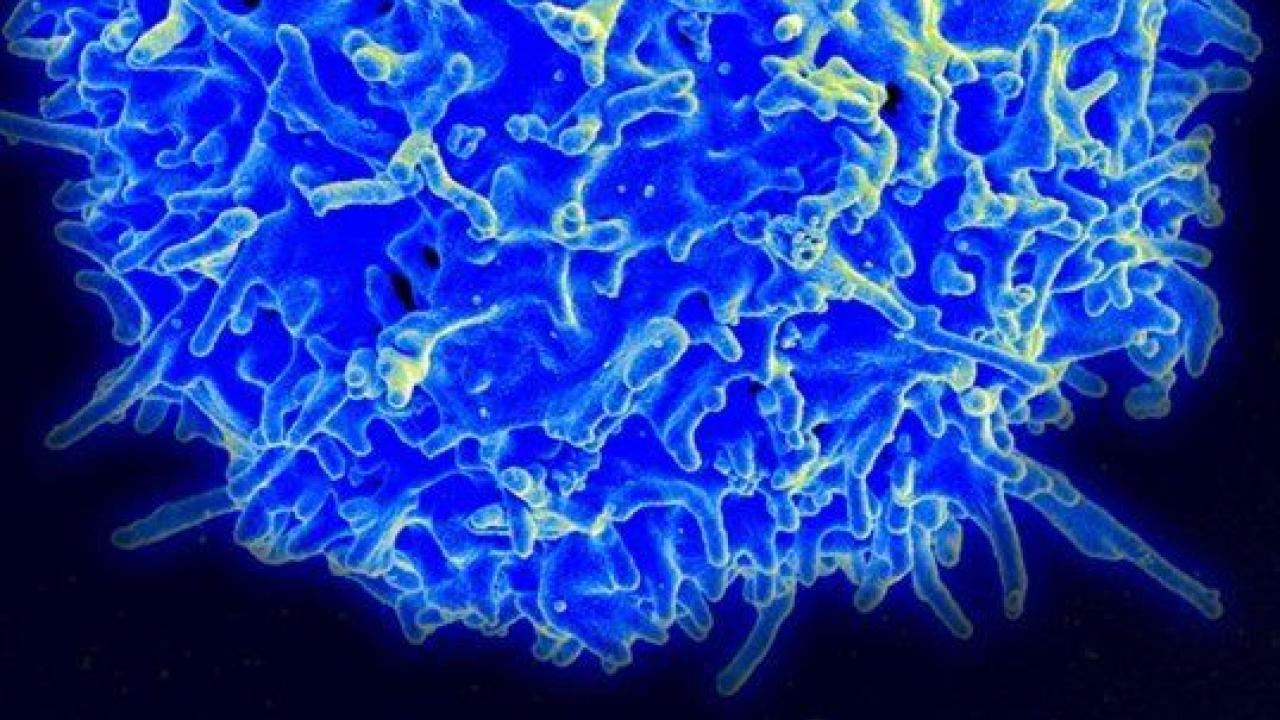
Microscopic image of a human T cell. T cells are the focus of current immunotherapies, however, researchers found that tumors contain a wide range of other immune cells, such as macrophages, NK and B cells. Image by NIH.
Using data from over 300 patient tumors, UC San Francisco researchers have described 12 classes of “immune archetypes” to classify cancer tumors. Their findings, published this week in CELL, reveal that cancers from different parts of the body are immunologically similar to one another. These classifications provide unique strategies for enhancing each patient’s choice of cancer immunotherapies.
The UCSF researchers, led by first co-authors Alexis Combes, PhD, and Bushra Samad, MS, and senior author, Max Krummel, PhD, obtained tumor specimens from 78 UCSF clinicians, and surveyed 364 tumors biopsies from patients and categorized them into groups based on their immune microenvironment. Their findings offer a new way of looking at cancer immunotherapy that matches the immune environment around the tumor and points the way to personalized immunotherapies.
“This is a new framework for how to look at cancer patients,” said Combes, director of the D2B CoLab and incoming assistant professor in the Department of Pathology at UCSF. “This work will help clinicians find the right biology to target and avoid targeting cells that aren’t present in the tumor.”
Immunotherapy for cancer treatment harnesses the body’s immune system to fight cancer. It has held great promise since it was first developed as a biological therapy used to treat a variety of cancers. While it has proven successful for some patients, immunotherapy does not work for all patients.
“We were driven by this question of why immunotherapies work for some people and not others,” said Krummel, Robert E. Smith Endowed Chair in Experimental Pathology and director of the Krummel Lab at UCSF. “It’s more complex than responders and non-responders. Our goal was to discern how many responses there are to these targeted therapies.”
Tumors Have Microenvironments
Tumors are more than just out-of-control cells. They are also filled with immune cells which are supposed to kill the cancer cells. But in cancer, malignant cells are able to overcome the body’s immune response and continue to multiply.